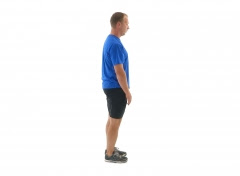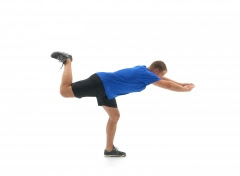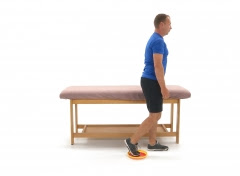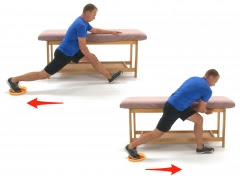Attention All Soccer Players: 3 Key Exercises To Do For Your Hamstrings Right Now
- K-Town Physio
- Oct 14, 2021
- 2 min read

Soccer is one of my favourite sports. With the reopening of summer soccer leagues after the lockdown, I was reminded of how susceptible the hamstring is to injury in soccer. Hamstring strains are one of the most common injuries for soccer players that I treat in the clinic. It mainly happens in two ways, either by sprinting or by over-stretching the leg (e.g. slide tackles).
An injury to your hamstring can take some time to recover and, without a proper physiotherapy rehab program, can likely happen again with return to sport. Hamstring strains can also be very painful, so it is good to think about prevention if you’ve had a pulled hamstring before or not.
In my experience, a great way to treat and prevent recurring hamstring strains are lengthening exercises. In particular, eccentric strengthening exercises, where the hamstring muscle has to work in its’ most lengthened position, are a very effective way to make our hamstring really, really strong for all the things we need it to do in soccer.
So, here are three of my favourite exercises for your hamstring, taken from the Askling L protocol. They are not recommended if you are pregnant or have acute low back pain.
The Extender
Lie on your back.
Hold and stabilize the thigh of the injured leg with the hip flexed approximately 90 degrees and then perform a slow knee extensions to a point just before pain is felt.
Flex the knee and repeat.
The Diver
Stand on the involved leg.
Keeping your spine neutral, bend forward from the hips as you stretch forward with the arms and simultaneously extend the free leg back as much as possible, keeping the pelvis horizontal and level.
Keep your support knee bent to 10 to 20 degrees and your free knee bent to 90 degrees.
Perform this exercise slowly in the beginning. think about simulating a dive while doing this exercise.
The Glider
Start from a standing split stance position, injured leg forward, next to a support that you can hold onto.
You may want to put a towel/low friction sock under your rear foot to execute the exercise properly.
Put all your body weight on the heel of the injured leg (front leg) with approximately 10-20 degrees of flexion at the knee.
The motion is started by gliding backward on the other leg and stopped before pain is reached.
The movement back to the starting position should be performed with the help of both arms, not using your injured leg.
Progress by increasing the gliding distance and performing the exercise faster.
If you find these exercises too complicated or have recently injured your hamstring, our team of physiotherapists would be happy to consult and make a plan to help you reach your goals. Contact our team today for more information at 613-634-5878 or book your appointment online!
Have fun and remember: when you exercise your hamstring, think ´long and strong’.
Written by: Sarah Davidson, Registered Physiotherapist, Downtown Clinic
Exercise photos from Physiotec
References
Askling CM, et al. Acute hamstring injuries in Swedish elite football: a prospective randomised controlled clinical trial comparing two rehabilitation protocols. Br J Sports Med 2013;47:953–959








